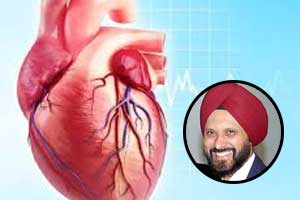- Home
- Editorial
- News
- Practice Guidelines
- Anesthesiology Guidelines
- Cancer Guidelines
- Cardiac Sciences Guidelines
- Critical Care Guidelines
- Dentistry Guidelines
- Dermatology Guidelines
- Diabetes and Endo Guidelines
- Diagnostics Guidelines
- ENT Guidelines
- Featured Practice Guidelines
- Gastroenterology Guidelines
- Geriatrics Guidelines
- Medicine Guidelines
- Nephrology Guidelines
- Neurosciences Guidelines
- Obs and Gynae Guidelines
- Ophthalmology Guidelines
- Orthopaedics Guidelines
- Paediatrics Guidelines
- Psychiatry Guidelines
- Pulmonology Guidelines
- Radiology Guidelines
- Surgery Guidelines
- Urology Guidelines
Indian doctor first to use 3D printing technology in Pulmonary AV malformation

Three-dimensional (3D) printing is a new modality which makes a true-to-life 3D model using sophisticated technology. An Indian doctor for the first time in the world recently used the 3D printing technology for a complex case of large Pulmonary arteriovenous (AV) malformation. His work has been published in the CTS Net of USA
Dr Harinder Singh Bedi – Chairman Cardio Vascular Endovascular & Thoracic Sciences Ludhiana Mediways Hospital – explained that his team had used the help of a cutting-edge technology called 3D printing to conduct a life-saving surgery in a young man.
The patient Mr Gurjit Singh (name changed) a 23-year-old college student presented with severe central cyanosis and clubbing. His echocardiogram was normal. A chest computed tomography (CT) and a pulmonary angiogram revealed a large AV malformation. His repeat echocardiogram with an injection of agitated saline into a peripheral vein showed an appearance of the saline in the left ventricle. Since the CT showed a complex anatomy, a 3D print of the lesion was made. The print helped the authors in counselling the patient and his relatives, and in planning the operation. Plan A was for a device closure, and the hardware for this was ordered. Plan B was for open surgery. While waiting for the endovascular equipment to be obtained, the patient had hemoptysis, and so semi-urgent open surgery was performed. A standard posterolateral thoracotomy was performed and a right lower lobectomy done.
With the knowledge provided by the 3D – Dr Bedi was able to remove the whole AVM in just 23 minutes with hardly any blood loss. Mr Gurjit Singh recovered well. His cyanosis has been replaced with a healthy normal pink and his breathing is normal.
This new application of 3D printing technology in Pulmonary AV malformation was reported to the CTS Net and published. The author Dr Bedi said that he "could foresee the immense contribution of this modality in minimally invasive surgery and precise procedures all of which lead to enhanced patient safety". Till now, there has been no mention of the use of 3D printing in such a potentially dangerous lung pathology thereby making Dr.Bedi be first to use it in this indication.
For further reference log on to : (www.ctsnet.org).

Disclaimer: This site is primarily intended for healthcare professionals. Any content/information on this website does not replace the advice of medical and/or health professionals and should not be construed as medical/diagnostic advice/endorsement or prescription. Use of this site is subject to our terms of use, privacy policy, advertisement policy. © 2020 Minerva Medical Treatment Pvt Ltd